If you are traveling to Boston and looking for one of the most scenic and historic spots to visit, chances are you thinking about heading to Acorn Street at Beacon Hill. It’s one of the most photographed streets in the country and is renowned for its true cobblestone road.
In this article, I’ll cover everything you need to know before visiting Acorn Street. I’ll touch on some of the interesting history behind the location and also give you some practical tips to make your visit as easy as possible.
Table of Contents
What is Acorn Street in Boston?
Acorn Street is a small street (or more accurately an alleyway) that is famous for its charming cobblestones, gas-lit lamps, red brick sidewalks, and overall historic look and feel. It is arguably the most photographed street in Boston and some even say the entire country.
Tip: Use the free app WalletFlo to help you travel the world for free by finding the best travel credit cards and promotions!
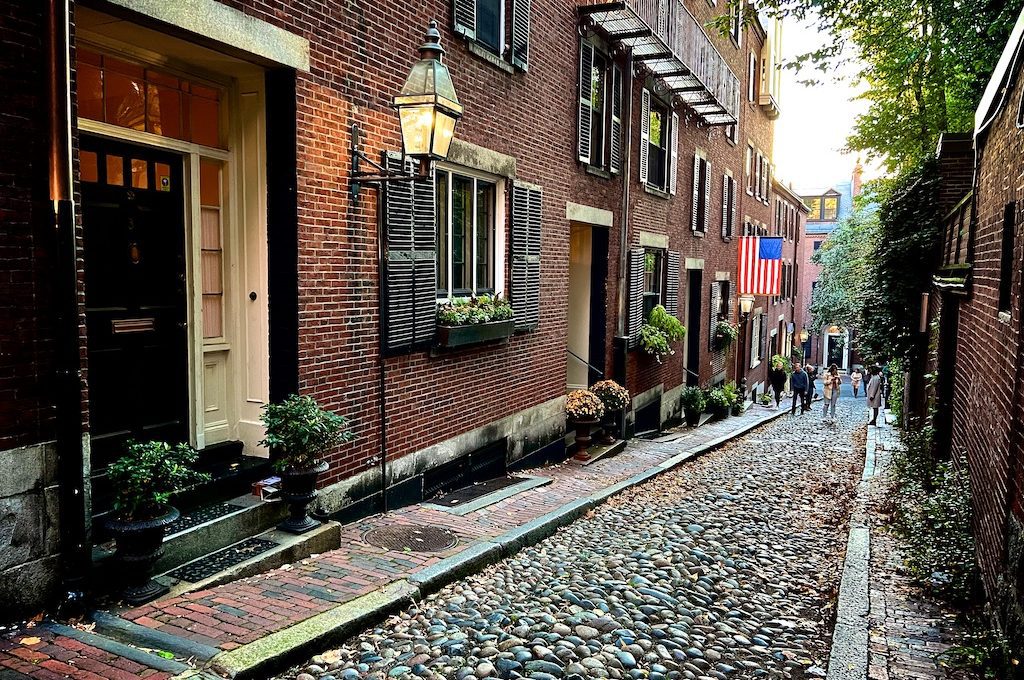
Why is Acorn Street so famous?
In short, Acorn Street is famous because it’s an original cobblestone street which is super rare to find these days in the US. On top of that, the street cobbles its way through charming federal-style row houses complete with antique street lamps and hanging ivy.
The entire setting, while unexpectedly small, is a sight to behold and almost museum-like but make no mistake, the main attraction here is the cobblestone and it’s worth understanding why.
A common pre-industrial paving technique for roadways was to use cobblestones.
These stones were found abundantly throughout New England and more specifically transported by coastal schooners from Maine.
The stones (also called “cobs” or “cobbles”) were set against each other in beds of sand. They retained their natural shapes which is why the cobbled stones are anything but uniform.
To help smooth things over, the lads back in the day would pour sand between the cobs but that could only do so much.
These impossibly bumpy paths — which were found all over Boston — were not very friendly to wheels, horses, or humans. As a result, in the mid-19th century, paving with granite stones (or “setts”) came into use.
Setts are roughly rectangular quarried stones, capable of creating relatively even streets and walkways.
Initially, these stones were large but people realized horses needed to get more traction on slopes so they soon went with smaller bricks.
A lot of people confuse setts for cobblestones but they are very different.
Not only are the two completely different in terms of shape and composition, cobblestone roads would typically be older and rarer to find which is exactly why Acorn Street is so special.
The cobblestone alleyway at Acorn Street was laid in 1823 back when it was home to artisans and general laborers, almost exactly 200 years ago.
Today, taking a stroll among the cobs feels like stepping back in time.
And it’s that historic essence that many tourists are interested in when they visit Acorn Street.
If there is any site that will capture that New England charm people look forward to visiting Boston, it’s going to be Acorn Street.
Is Acorn Street open to the public?
As of 2021 Acorn Street is open to the public but that might be changing some time soon….
Back in the 1980s a group of residents created the Acorn Street Association. Their goal, in a pre-Instagram world, was to preserve the beautiful and historic cobblestones of Acorn Street.
They had no idea that they would actually be preserving something that would end up causing a lot of frustration for the roughly 18 homeowners that make up the association today.
It’s estimated that “2,000 visitors [come] to Acorn Street over the course of a weekend in late September or early October.”
That’s a lot of foot traffic for such a tiny stretch of street.
Interestingly, Acorn Street is a “private way,” which means that it does not receive maintenance or upkeep from the city of Boston.
Instead, it is the owners of the residences who are responsible for the upkeep
Reportedly, the owners could also keep the tourists out if they wanted to. Indeed, there is currently a proposal for putting a security gate on the street.
Recently, residents put up a photography sign (perhaps banning it) but that was ordered to come down.
They also have posted “No Trespassing” signs on the alleyway corners but those apparently don’t deter tourists.
It’s not clear to me that locals have the law behind them to exclude visitors from walking along the private way, though.
As stated in this Boston.com article:
“Residents cannot put up a ‘No Trespassing’ sign at the front of a private way …
The public has the right to pass on it. People think of ‘private’ in the sense of something being exclusive. But it’s really private in that it has not been accepted as a public way, with public standards. It does not mean exclusivity.”
While the legal right to exclude visitors might be in question, it is pretty clear that local residents can at least set their own parking rules.
So I would avoid parking on Acorn Street because you could get your car towed. Driving through it is probably not a good idea either.
What’s up with the locals?
I’ve always been fascinated by people who buy famous homes or rent their homes to movie companies and then complain about the tourists that later come around to check out the house.
Oh, you mean you didn’t realize there was a chance thousands of people would be intrigued to come by and stop by your home?
You might be frustrated that some of the locals get annoyed with visitors coming to Acorn Street.
Shouldn’t the locals understand that they have brought this frustrating experience upon themselves by choosing to live in such a well-known location?
While that might be true for newer owners, Acorn Street did not really explode in popularity until fairly recently due to platforms like Instagram.
So it is feasible that some of the homeowners decided to live on Acorn Street before it became a tourist hot-spot. For that reason, I do sympathize with those owners.
Also, not every person who lives on Acorn Street has a problem with tourists.
While they seem to be in the minority, some do embrace the visits and might even be willing to share some of the history with you.
Value of the Acorn Street homes
These Acorn Street residences are high value homes.
Zillow shows 1a Acorn St, a two bedroom and one and a half bath going for $1,333,300 or rent at $3,899/mo and that’s the low end. 4 Acorn St is valued at $3,640,500.
The homes probably average from $2 million to $4 million in value but some of the larger homes adjacent to Acorn Street may go for as much is $7 million.

Where is Acorn Street in Boston?
Acorn Street is located in Boston’s Beacon Hill, an affluent area known for its steep streets which are lined with Federal-style and Victorian brick row houses.
On our visit, we arrived via rental car from Salem after a long day of checking out Hocus Pocus sites and Salem Witch Trial sites.
We chose to drive into the Boston Common and utilize the parking garage.
The parking garage was quite large and we did not run into any issues with parking availability.
Acorn Street was only about a 10 minute walk from the parking garage which wasn’t bad at all, although the terrain is pretty hilly at times.
The entire Beacon Hill area has some interesting architecture.
If you don’t have a vehicle you can just walk to the area or get dropped off by an Uber and simply explore everything the area has to offer.
Nearby attractions include:
- Museum of African American History
- Massachusetts State House
- Nichols House Museum
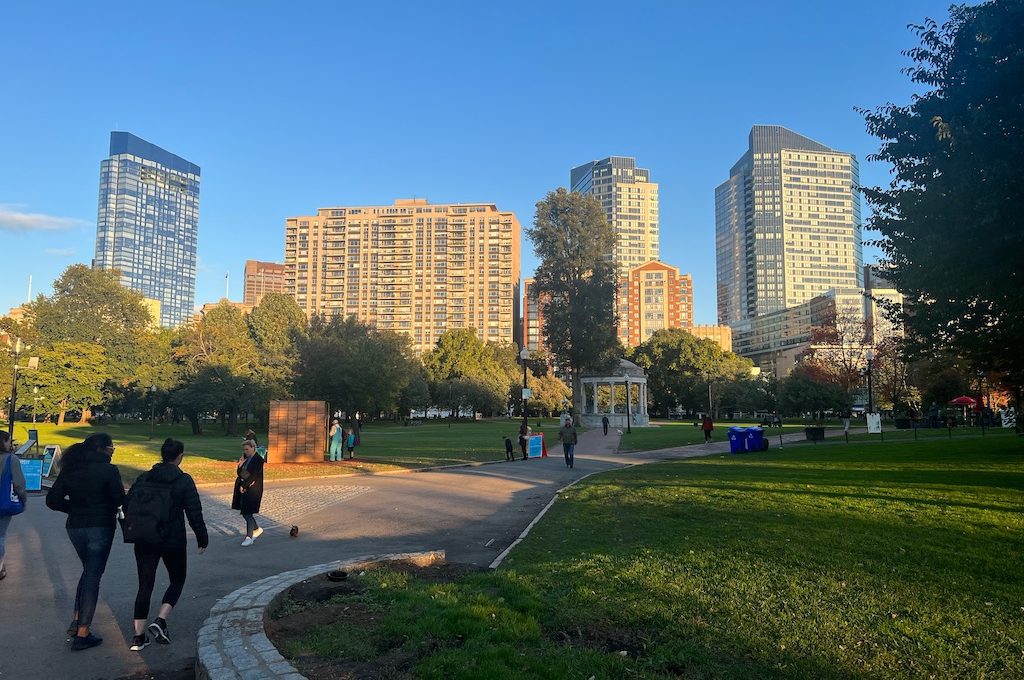
How to visit Acorn Street
There are two ways you can visit Acorn Street.
Take a drive-by glimpse
You can choose to simply walk past the alleyway and take a quick photo of the alley from one of the ends.
If you do that, I would probably recommend taking it from the bottom as that angle looks a little bit more interesting but both sides have great views.
Note: If there is a car in the alleyway, your shot could easily be ruined and you may need to go to the other side.
Walk through the alleyway
The other option is to actually walk through the alleyway.
Plenty of visitors do this but this could technically be considered a trespass (not IMO) and there is the chance you could encounter an angry local when doing this so try to be as unnoticeable as possible.
Although the Acorn Street Association website does not appear to be active any longer they previously stated the following:
“Tourists are welcome to click a quick picture at the top or bottom of the street but access is limited and the privacy of the owners needs to be respected… Please remember that people live here; we are happy to share our view but please consider your fellow visitors as well as the residents as you pass by!”
Most likely, based on my experience and research, you won’t get any serious pushback from locals unless you are lingering around for a photo shoot, being too noisy (or nosy), etc.
If you choose to walk on Acorn Street you’ll find that the cobblestone street is extremely rugged.
I was surprised to find that it felt about as rugged as many of the rocky trails we’ve hiked on. If you are wearing high heels, it’s going to be rough.
Because there are private residences that line Acorn Street you definitely want to be considerate about being a nuisance.
What does that mean practically speaking?
- Keep a reasonable distance from doorways and windows.
- Don’t climb on stoops and definitely don’t go peeking inside the homes.
- Avoid being loud and make sure that you don’t leave any trash behind.
- Don’t linger in one spot for too long.
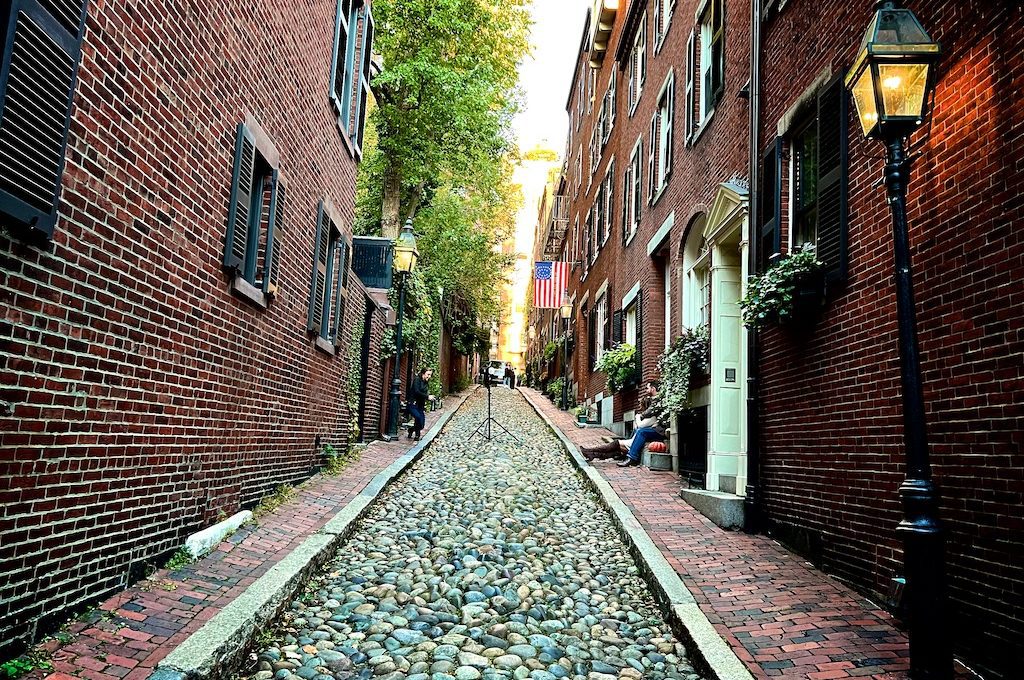
When to visit
Acorn Street is not just a popular place for visitors to come and snap Instagram photos.
It’s also where photographers get it poppin’ with engagement and wedding photos. In fact, we encountered a couple getting photographs done during our visit.
There are reports of photographers trying to clear the road of other people so that they can get their shots.
Presumably, the photographers have applied and received a permit for the photography which can cost up to $3,000 for a day.
I’m sure many photographers just hop in and hop out so that they don’t get called out for not having a permit so you might run into some of them. And they might be more pushy since they are trying to get out quickly.
So I think you should try to be mindful of the photography sessions but not to the extent that you’re not able to enjoy or snap a picture of the road yourself.
Between the photographers, fellow tourists, and the locals, the area can get a little bit hectic sometimes.
So if you want to avoid the crowds try to visit in the early morning or late afternoon on a weekday. If you come later in the evening the lamps will be lit which I also think is an ideal time to stroll through.
In terms of the best time of year, fall is a great time but will likely be the busiest (especially on nice days).
Winter might have ice or snow on the cobblestone road which could be magical (and deadly) but spring and summer are probably the next best times behind fall.
If you can catch it right after a rainstorm the colors tend to pop more on the cobblestone and bricks.
Are there other cobblestone roads nearby?
You can also look for cobblestone roads or pathways nearby off Spruce Street, Louisburg Square, and Mount Vernon Street. And although not in Boston, Nantucket is also another destination to head to for cobblestone roads.
If you wanted to find areas with granite setts, Boston City Walks recommends you look around the famous circle commemorating the Boston Massacre, Faneuil Hall (Congress Street), North Square in the North End (in front of the Paul Revere House), and Marshall Street by the Union Oyster House.
Acorn Street FAQ
Acorn Street was built in 1823 so it will be 200 years old in 2023.
Acorn Street is located on a private way but members of the public still can legally access the street.
Yes, Acorn Street has its original cobblestones from 1823 which makes it such a rare and interesting destination.
Acorn Street is approximately 200 feet long.
Final word
Acorn Street is a picturesque and historic site to check out. There are not many places that can take you back in time like Acorn Street and show you true cobblestone roads. But at the end of the day it is a small and narrow alleyway full of private homes and so it should be treated with the appropriate level of respect.
Daniel Gillaspia is the Founder of UponArriving.com and the credit card app, WalletFlo. He is a former attorney turned travel expert covering destinations along with TSA, airline, and hotel policies. Since 2014, his content has been featured in publications such as National Geographic, Smithsonian Magazine, and CNBC. Read my bio.

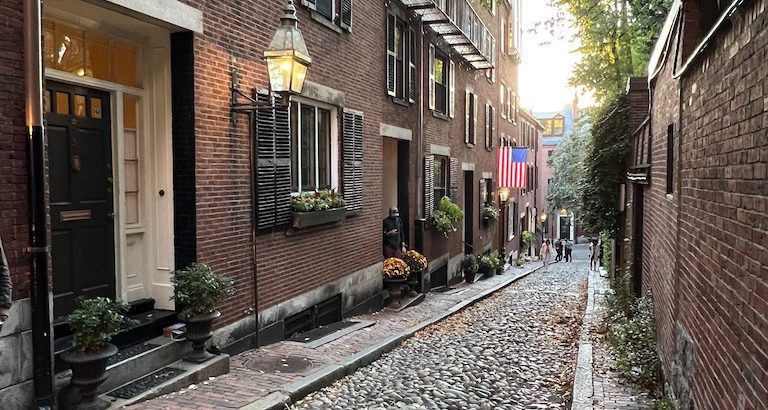
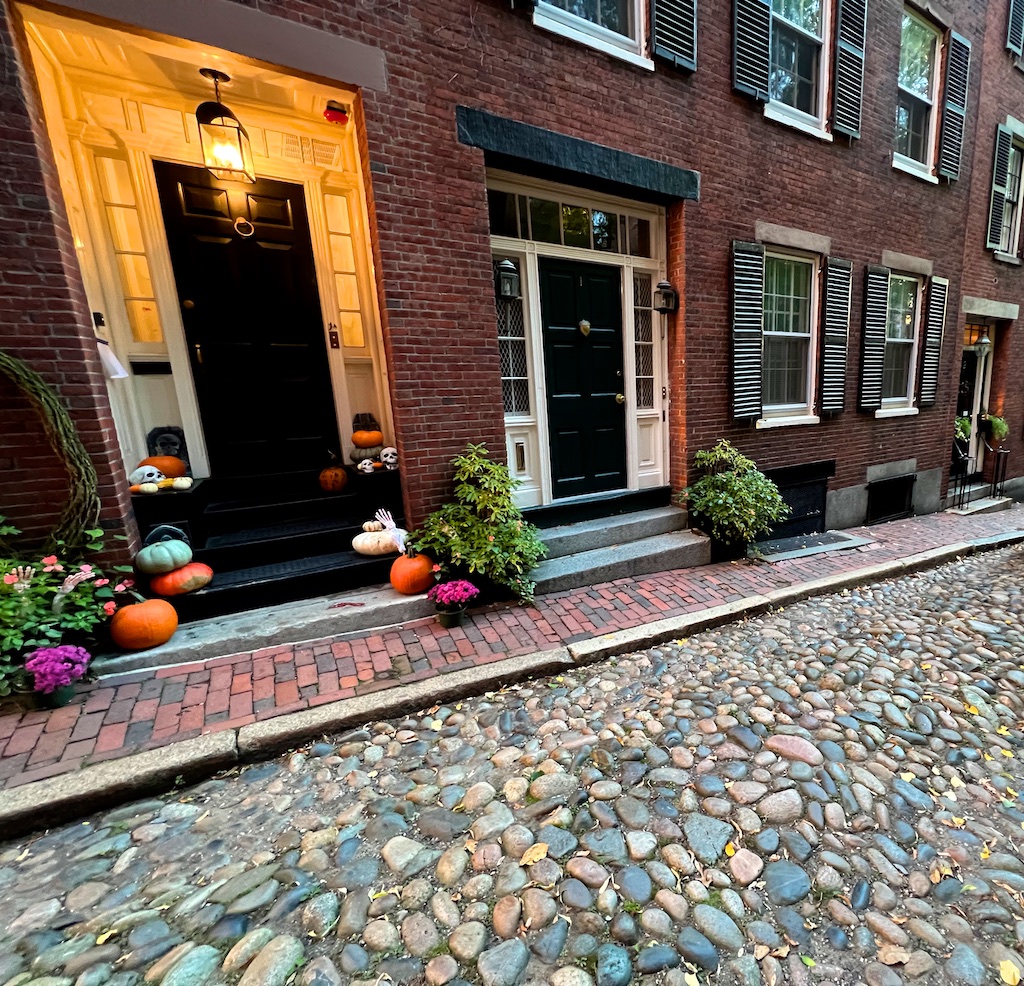
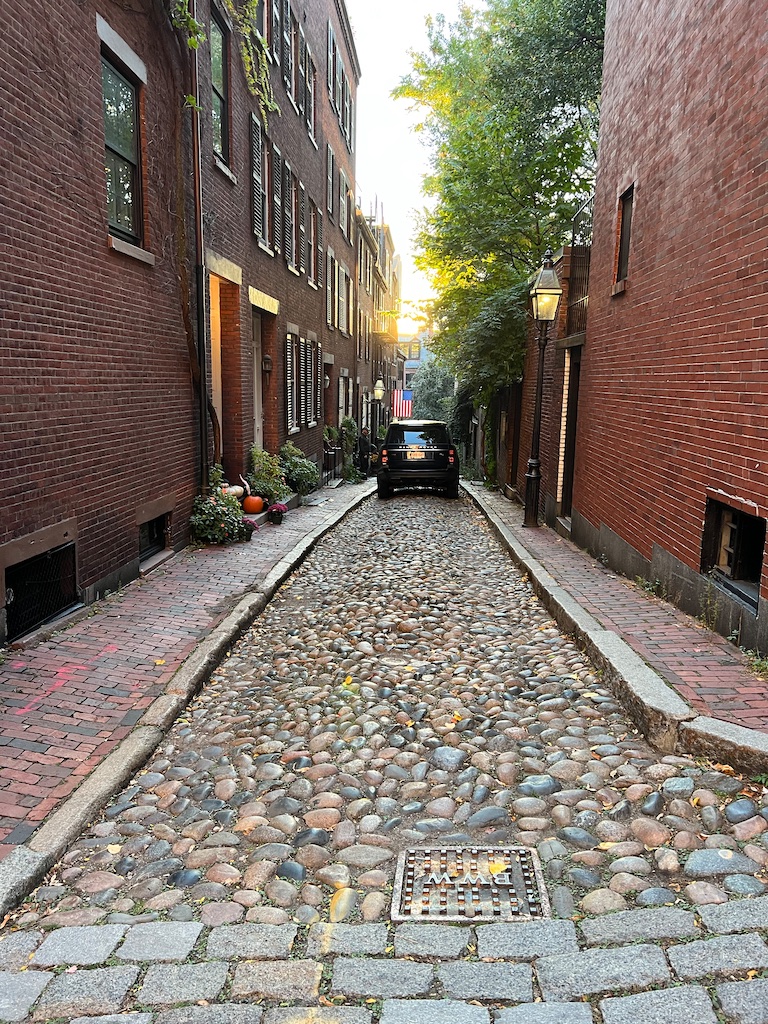
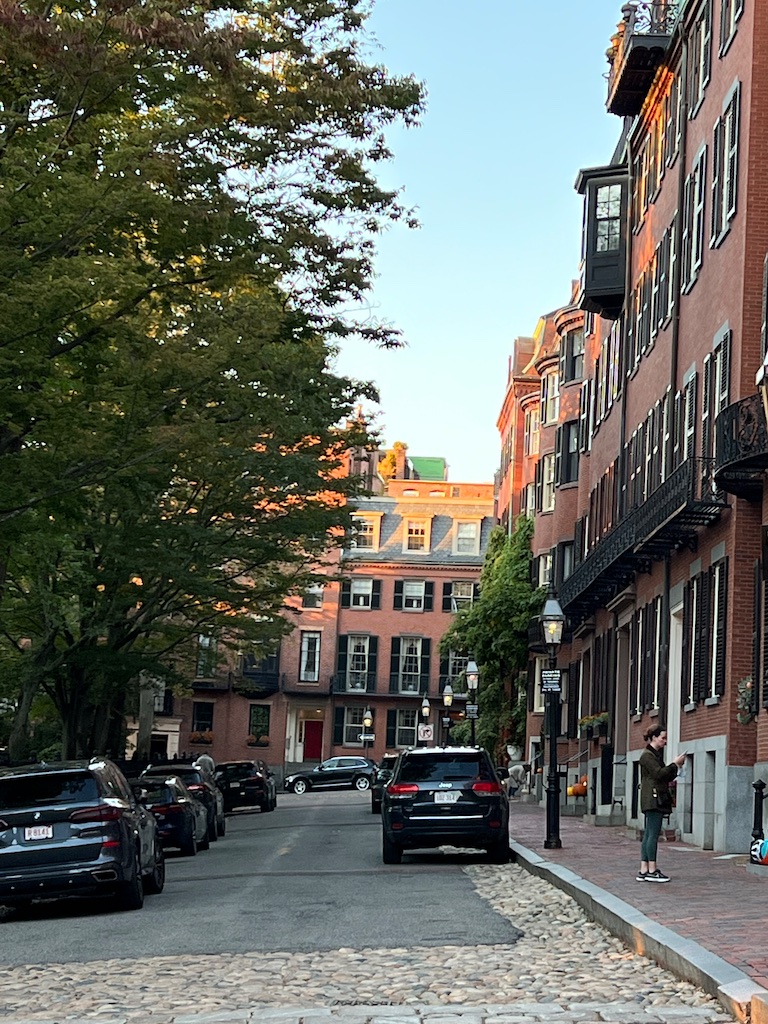
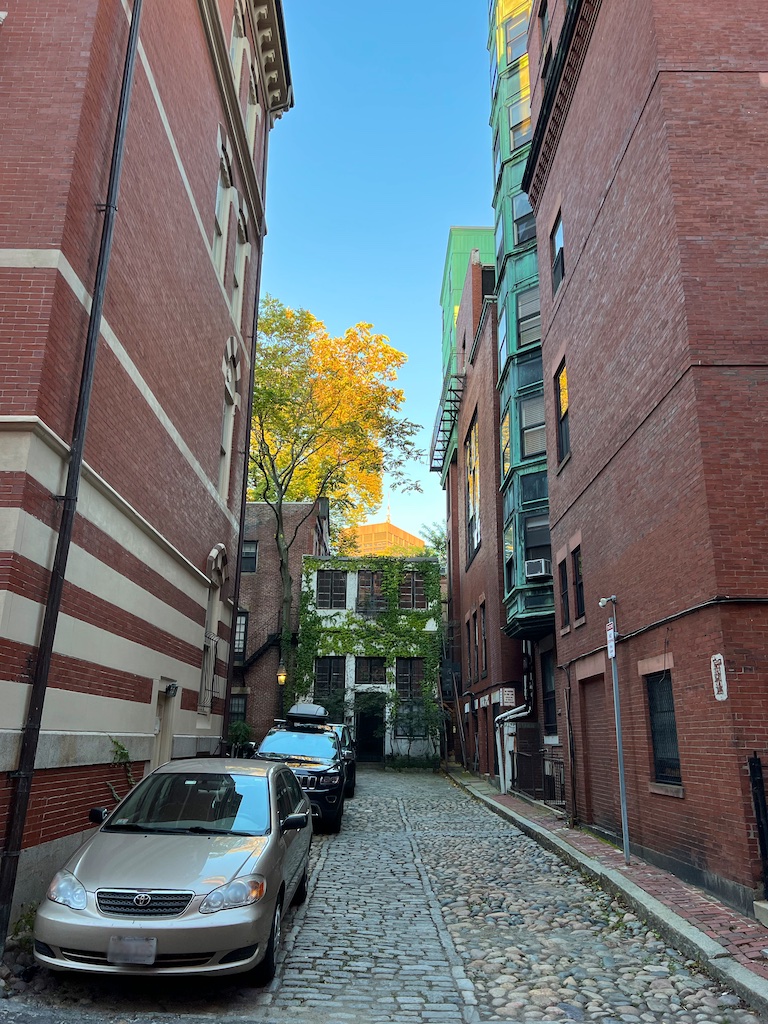
Elfreth’s Alley in Philadelphia is completely public. Elfreth’s Alley is older than Acorn St. It’s also a street of private homes. Best of all, it is prettier than Acorn St.
I just had to pass on Elfreth’s Alley because holiday traffic was crazy. Ugh. Can’t wait to check that place out though!